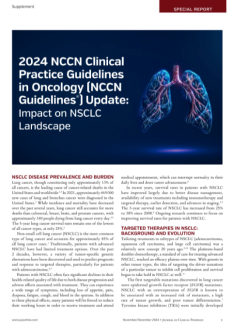Study Highlights Risks and Outcomes of Radiation Therapy in Patients With Endometrial Cancer
Patients with endometrial cancer who receive adjuvant radiation therapy (RT) may face an increased risk of developing certain second primary malignancies (SPMs), according to a study published in Scientific Reports.
Pelvic RT is often used in patients with early-stage endometrial cancer. During RT, a large portion of functional bone marrow is within the radiated field, making it necessary to understand the risk of subsequent hematologic malignancies in long-term endometrial cancer survivors necessary.
“Therefore, the purpose of this study was to investigate the relationship between adjuvant RT and the risk of developing solid and hematologic second malignancies in endometrial cancer patients as well as to evaluate their survival outcomes,” explained Yuebo Wang, Department of Research and Foreign Affairs, Henan Provincial People’s Hospital, Zhengzhou University People’s Hospital in Zhengzhou, China, and coauthor.
The comprehensive analysis, conducted using data from the Surveillance, Epidemiology, and End Results (SEER) database, examined 62 108 endometrial cancer patients with endometrial cancer diagnosed between 1975 and 2020.
The researchers found that 27.1% of patients underwent RT after surgery, while 72.9% received surgery alone. Patients receiving RT were more likely to have advanced tumor stages and different demographic and clinical characteristics than those in the no-RT group. Over a median follow-up period of 107 months, 6465 SPMs were recorded, with similar cumulative incidences in the RT and no-RT groups at 30 years (20.9% vs 19.7%).
RT was associated with an increased risk of specific SPMs, including cancers of the colon and rectum (HR, 1.29; 95% CI, 1.12–1.50), lung (HR, 1.27; 95% CI, 1.08–1.50), urinary bladder (HR, 1.86; 95% CI ,1.41–2.46), and vulva (HR, 1.72; 95% CI, 1.04–2.85). However, it was linked to a decreased risk of breast cancer (HR, 0.89; 95% CI, 0.80–0.98). These risks varied by latency time and patient age, with younger patients and longer latency periods showing a higher risk for certain SPMs.
Survival analysis revealed worse outcomes for patients with SPMs than those without (HR, 1.34; 95% CI, 1.30–1.39). However, propensity score-matched comparisons indicated no significant survival differences between RT and no-RT groups among patients who developed SPMs.
“Although continued discussion and further studies are warranted, it is reasonable to recommend enhanced surveillance of endometrial cancer survivors as a key consideration for SPM detection, particularly in those who receive RT,” concluded the study authors.
Reference
Wang Y, Cai Y. Association between radiation therapy for primary endometrial cancer and risk of second primary malignancies: a retrospective cohort study. Sci Rep. 2024;14(1):24623. doi:10.1038/s41598-024-74840-4

















